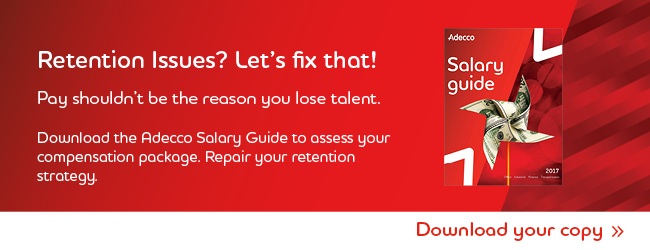
Welcome to the ABC’s of what it means to be an employer in a candidate driven market. With the employment rate dipping below 5%, and the number of long term unemployed down year-over-year, the hunt for talent is tight. Don’t worry we are here to give you the candidate outlook and arm you with tools to prepare.
Recruitment
A decade ago, the average unemployment rate was 4.6%. At an average of 4.9% this year, we have approached pre-recession levels of employment. We are officially in a candidate driven job market. The Business Employment Dynamic Summary released by the BLS, reports a net gain of 194,000 jobs in the first quarter of 2016. In laymen’s terms, job growth is steady. The number of positions is growing faster than the number of qualified candidates there are to fill them.
What does this mean for you?
It’s time to shift your strategy. In a market like this, companies with strong employer brands who invest in training and education will thrive. Companies who pay under market and lose sight of the importance of company culture will find themselves at the bottom of the talent war. Not only will it be difficult to attract new talent, it will be hard to keep your best employees.
Here are some key stats we uncovered during our annual survey of Best-in-Class companies:
- They are more likely to increase training to ensure that employees have the critical skills needed for their roles.
- They are 45% more likely to share content and job postings across social media platforms, strengthening the daily presence of their brand.
- They are 37% LESS likely to have trouble sourcing qualified candidates.
Turnover
As the economy recovers and talent becomes harder to find, the risk of internal turnover becomes higher. Right when you need great talent to capitalize on the plethora of economic opportunity, your competitor may very well be recruiting them out from under you. According to Catalyst employee turnover is on the rise, almost 59,000,000 people quit in 2015. Thirty-seven percent of US employees are considering quitting, an increase of 33% since 2011.
Luckily, there are small things you can adjust to help reduce the incidence of turnover. If you address issues that cause tension in the workplace such as limited opportunity, excessive workload and lack of reward you will see an increase in employee engagement. Pull employees back by offering:
- Competitive Compensation
- Flexible work schedules
- More challenges
- A clear career path
Boomerang Employees
Have you heard this phase yet? No? A Boomerang employee is a person who worked at your organization, left and has returned. Improved unemployment rates helped buoy the number of boomerangs in the workforce. This is, in part, because wage rates have not increased as fast as job growth. Though there was once a stigma surrounding this group, Forbes reports that “85 percent of HR professionals say they have received job applications from former employees, and 40 percent say their organization hired about half of those former employees who applied”.
We want to give you some advice. Don’t fear the boomerang employee! They are most likely to have a positive effect on your culture and are much easier to train. If an employee wants to return, it speaks volumes about what your organization has built. It’s a great reason to ensure that you properly conduct exit interviews and leave on positive terms with any talent that decides to venture elsewhere.
The candidate driven market shift does not have to be bad for business. It’s a great opportunity to help improve. For more insights, download our Definitive Guide to Building a Better Workforce.

